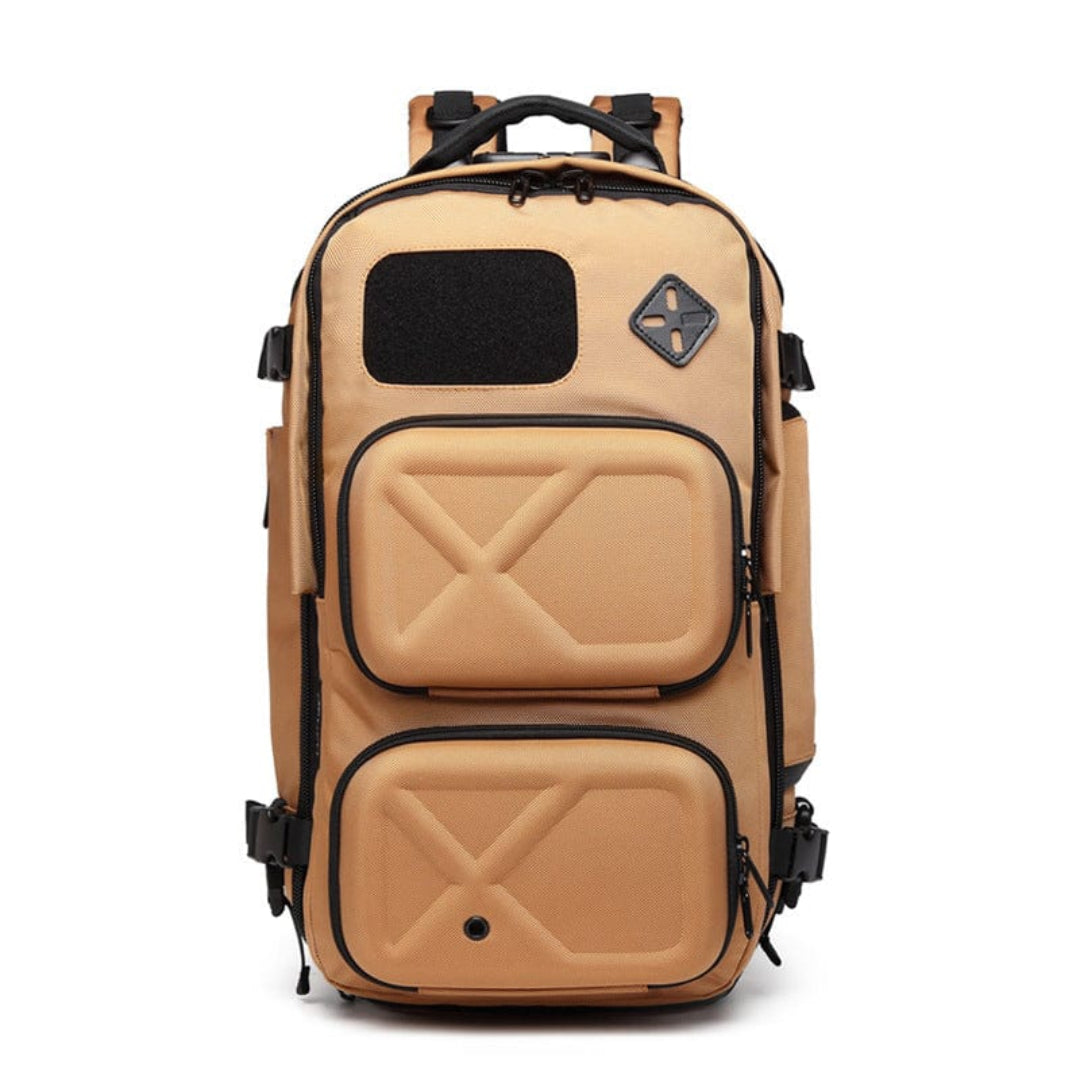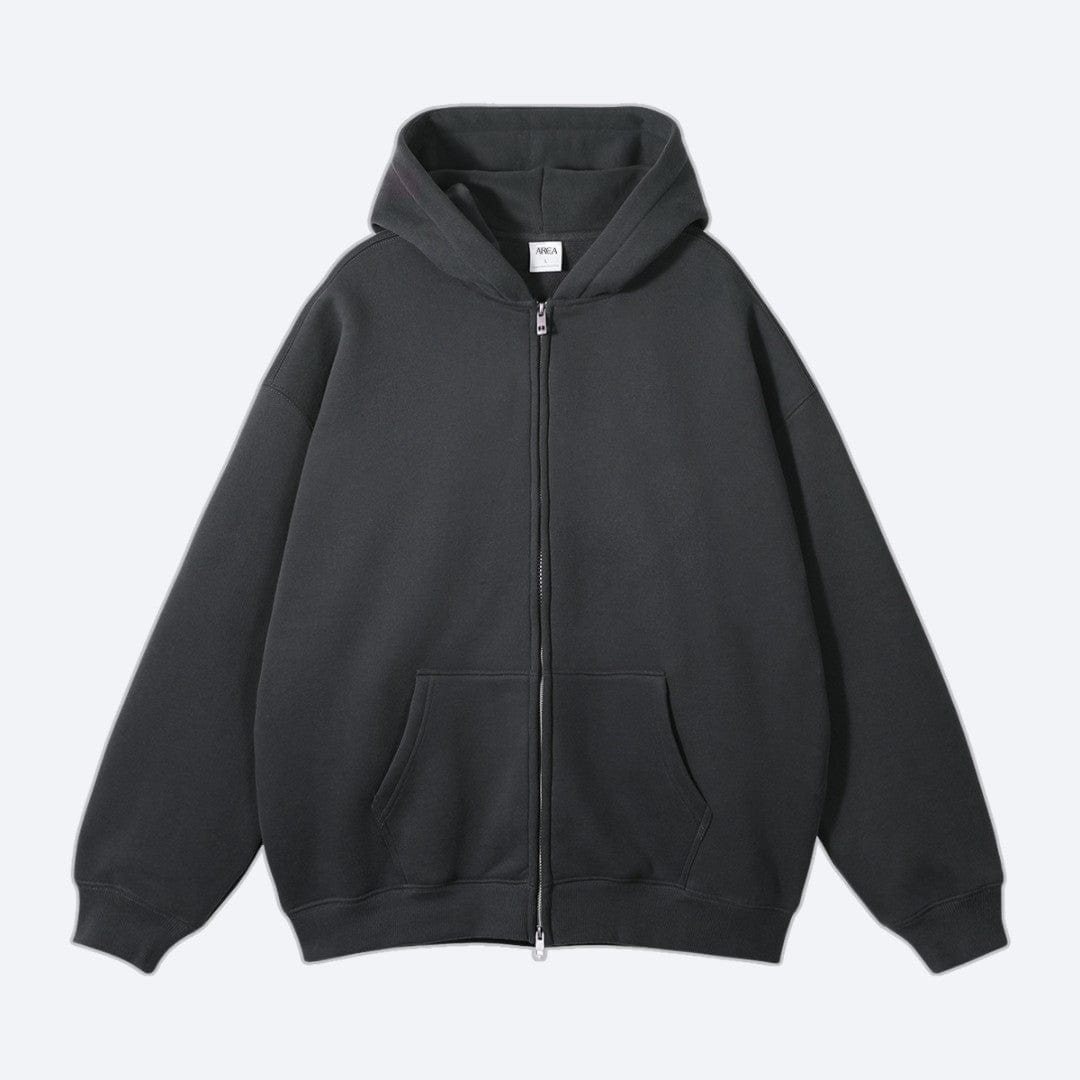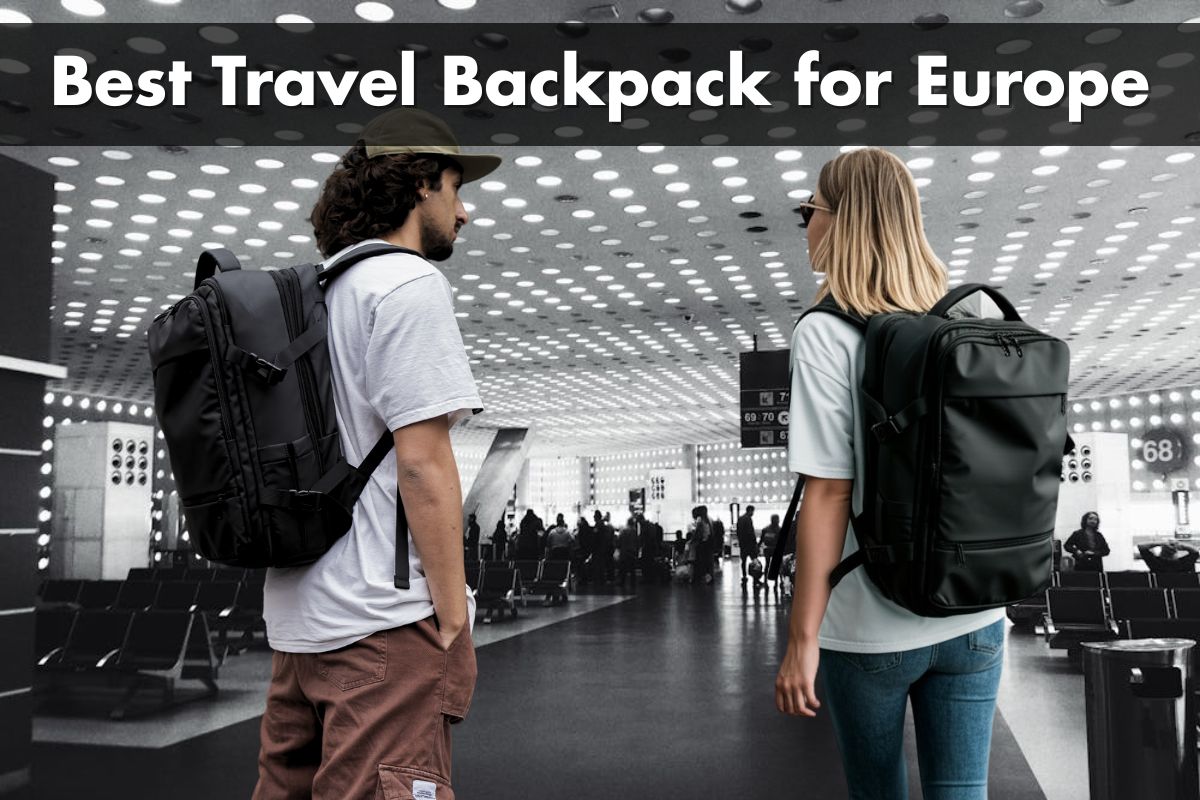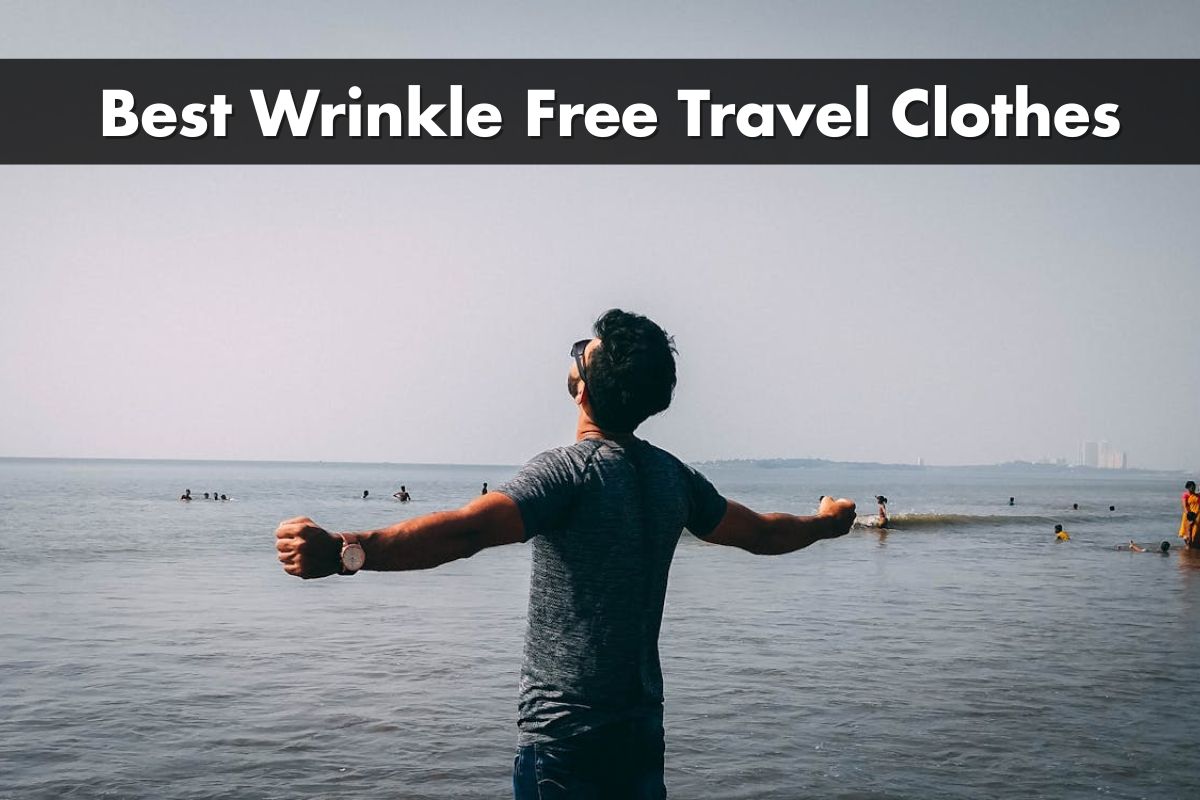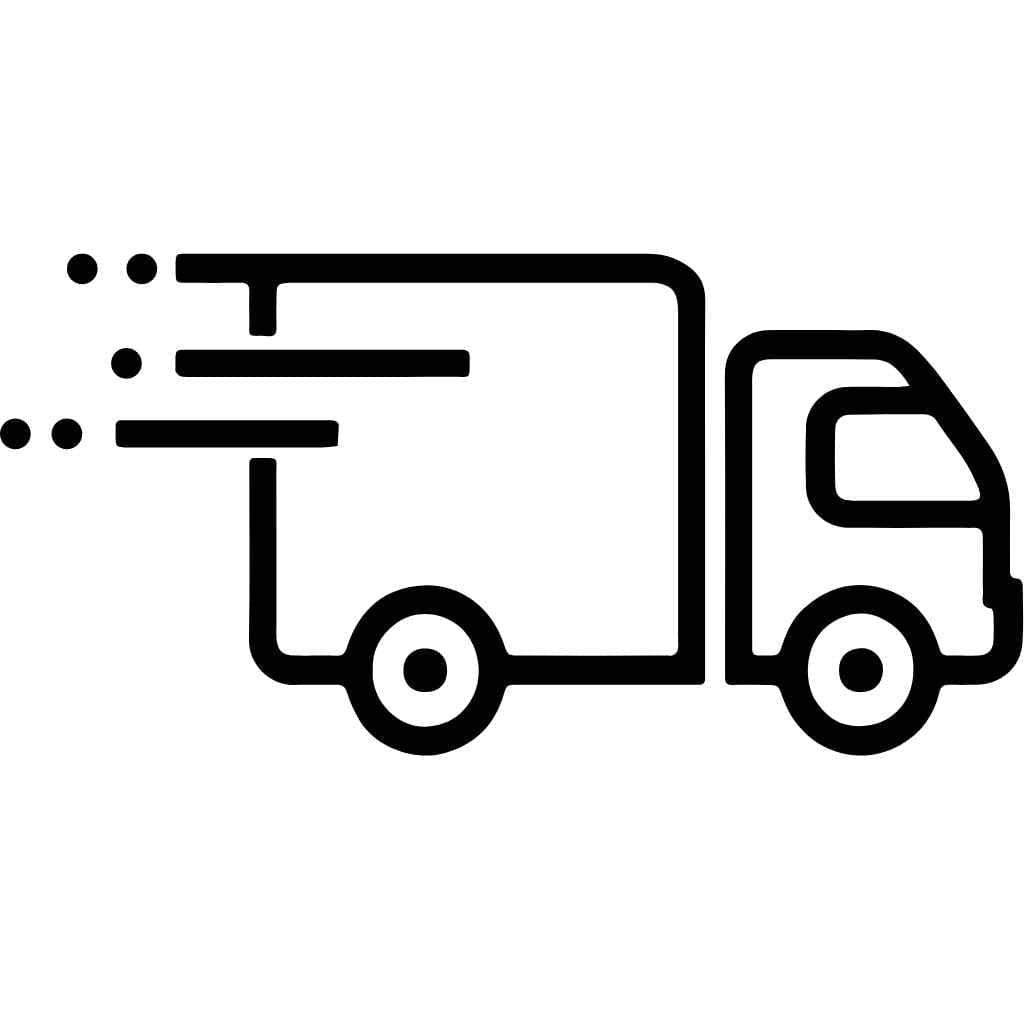Planning a backpacking trip through Europe is thrilling, but choosing the right travel backpack can feel overwhelming. With so many options, it's easy to get lost in the details. Yet, the size, comfort, and durability of your backpack are what truly matter. After all, you'll be carrying it through cobblestone streets, bustling train stations, and crowded hostels, so it needs to work with you, not against you.
A smaller, carry-on-sized backpack is often the smarter choice. It saves money on budget airline fees, fits easily into hostel lockers, and makes navigating tight spaces a breeze. Plus, doing laundry in Europe is simple, so there's no need to overpack. Trust me, a lighter bag means more freedom to enjoy your adventure without the strain of lugging around unnecessary weight.
What Size Backpack Should You Buy for Europe?
Choosing the right backpack size depends on your travel length, activities, and the season. Bags around 40-50 liters work well for most trips through Europe. These are large enough for several outfits, toiletries, and small extras while remaining carry-on compliant on most airlines.
Smaller backpacks, under 30 liters, are ideal for short city visits or day trips where only essentials like a jacket, water bottle, and snacks are needed. However, extended trips requiring winter clothing or gear might need a pack closer to 60 liters. Keep in mind that anything above this size becomes difficult to carry and won't meet most carry-on restrictions.
Get Organized
Keeping your travel essentials organized makes a huge difference during a Europe trip. A well-designed travel backpack with multiple compartments and pockets helps compartmentalize your items, making everything easier to access without unpacking the whole bag. For instance, look for dedicated sections for clothes, a padded laptop sleeve, and smaller pockets for toiletries or cables.
Compression straps or packing cubes maximize space and minimize bulging, helping your backpack maintain a sleek and manageable profile. I always use packing cubes to categorize items like tops, bottoms, and underwear. They not only save space but also simplify finding specific items quickly.
A separate compartment for shoes or dirty laundry prevents clean clothes from getting soiled. This feature is especially useful for longer trips or when exploring outdoor destinations. Additionally, water-resistant pockets for valuables like passports or electronics help protect them during unexpected rain or spills. An organized backpack minimizes stress and enhances the overall travel experience.
Prevent Theft on your European Getaway
Securing valuables is essential when traveling in Europe, where pickpocketing and petty theft can happen in busy areas. Choosing a backpack with lockable zippers and reinforced fabric adds an extra layer of protection. Lockable zippers prevent unauthorized access, while cut-resistant materials deter attempts to slash the bag.
Wearing a backpack properly contributes to safety. Carry the pack snugly against your back rather than loosely hanging. Some travelers opt for anti-theft backpacks with hidden compartments to conceal passports, cash, and credit cards. If hidden compartments aren’t available, using internal pockets within the bag is a practical alternative to reduce visibility of valuables.
Being mindful of surroundings minimizes risks. Crowded spots like metro stations, tourist attractions, and markets often attract pickpockets. Wearing the backpack in front during crowded moments or keeping one hand on it shows increased vigilance. Additionally, distributing valuables in different compartments limits the impact in case of theft.
Investing in a portable travel lock enhances security during stays at hostels or common storage areas. Securing your backpack to fixed objects deters opportunistic theft. These practices, combined with a thoughtful bag design, promote a safer and smoother travel experience across Europe.
Stay Comfortable With a Carry On Backpack
Carrying a lightweight, well-fitted backpack enhances comfort during Europe trips. Backpacks around 40-50 liters strike the perfect balance between spaciousness and portability. These sizes allow enough room for essential items without overburdening the traveler, making train travel, exploring cobblestone streets, or navigating crowded hostels more manageable.
Padded shoulder straps and adjustable hip belts are essential for even weight distribution. Features like breathable back panels reduce sweat buildup, especially during summer months. Lighter loads also minimize physical strain, even during long walking days or while climbing stairs in accommodation without elevators.
Smaller carry-on backpacks fit easily into overhead compartments on flights or buses. Many budget airlines in Europe strictly enforce carry-on restrictions, so a compliant size saves time and avoids fees. Additionally, tight hostel lockers usually accommodate smaller bags, ensuring belongings stay secure.
When choosing a carry-on backpack, I look for ergonomic designs and durable materials. A well-constructed pack offers support and long-term reliability, so comfort doesn't compromise durability. Top backpacks combine lightweight builds with functional designs that reduce effort during constant movement, perfect for Europe's diverse destinations.
The Best Travel Backpack for Europe
Finding the right travel backpack for Europe balances practicality, comfort, and durability. Among the top choices, two standout models are the Arca 40L and the Salkan Backpacker. Both cater to travelers with different needs while offering high-quality features.
The Arca travel backpack 40L is ideal for those seeking a compact, carry-on-compliant option. It provides just enough room for essentials without exceeding airline size limitations, making it a great fit for budget airline travel. The lightweight design, coupled with padded shoulder straps and a breathable back panel, ensures comfort during long exploration days. Lockable zippers and a streamlined aesthetic also enhance its security and utility in crowded European cities.
The Salkan Backpacker offers extra space for longer trips, accommodating items like winter gear while maintaining portability. Its multiple compartments allow organized packing, and the separate shoe section keeps clean clothing protected. Adjustable straps and a sturdy build make it suitable for extended journeys or mixed-weather conditions. Despite its larger size, it remains comfortable and convenient, even for hostel stays with small lockers.
Smaller travel backpacks—typically 40-50 liters—are often the smartest choice. They promote lighter packing, fit better into hostel lockers and train compartments, and reduce overall travel strain. Smaller bags also help avoid crowded dorm room friction or check-in fees. Whether using these models or others, prioritizing size, security features, and comfort ensures a reliable travel companion tailored to Europe's unique needs.
Best Travel Bag Accessories
Choosing the right travel bag accessories ensures a smooth and hassle-free experience while backpacking through Europe. These tools improve organization, maximize space, and add convenience to your journey.
Packing Cubes
Packing cubes streamline the packing and unpacking process, keeping items organized and accessible. I use lightweight, durable cubes to categorize my clothing, such as one for tops, one for bottoms, and another for undergarments. This segmentation eliminates clutter and allows quick access to specific items without rummaging through my entire backpack. Additionally, these cubes compress clothes, making the most of limited bag space.
Daypack
A compact daypack is indispensable for daily excursions. I prefer one under 20 liters that fits essentials like a water bottle, camera, and maps. Look for a packable daypack that folds into a small pouch when not in use. For extra security, choose a design with hidden zippers or lockable compartments. A lightweight, ergonomic build ensures comfort while exploring cities or hiking trails.
Travel Pouches
Travel pouches simplify carrying and organizing small valuables. I rely on RFID-blocking pouches to protect cards and passports against theft while navigating crowded places. Compartments for cash, boarding passes, and tickets prevent misplacement and make transactions or check-ins faster. Sling it around your neck or tuck it into your daypack for added security.
Europe Trip Planning Resources
Organizing a backpacking trip to Europe involves balancing logistics, budget, and destinations. When planning my trips, I rely on several resources that make the process easier.
- Destination Guides
Region-specific guides help uncover hidden gems and provide critical details like transport options and cultural norms. I frequently use guides that include itineraries and lesser-known spots alongside major landmarks.
- Transportation Tools
Efficient travel across Europe is possible with tools that compare train, bus, and flight costs. I recommend focusing on platforms that show journey durations and ticket flexibility to match fast-paced itineraries.
- Accommodation Databases
Reliable accommodation platforms simplify booking hostels, guesthouses, or hotels. I opt for ones with detailed reviews focusing on budget options near public transit or city centers, connecting me to everything conveniently.
- Budgeting Apps
To track expenses, budgeting apps tailored for travelers assist me in effectively allocating funds. These tools break down costs like food, transport, and activities, creating clarity for each day.
- Language Translation Apps
Europe’s diverse languages can be a challenge, but translation apps bridge the gap for accurate communication. I rely on ones with offline features for remote areas without internet access.
- Travel Insurance Comparison
Securing travel insurance gives me peace of mind regarding potential mishaps. Comparison tools help evaluate policies covering theft, medical emergencies, or trip cancellations, tailored to extended backpacking.
These resources collectively streamline my Europe trips, keeping adventures planned yet flexible for spontaneous discoveries.
Comparing Travel Backpacks
When comparing travel backpacks for Europe, I look at three main criteria: size, comfort, and organization. These factors determine how well a bag adapts to diverse travel scenarios, from navigating cobblestone streets to fitting into tight hostel lockers.
Size Variations
Backpacks generally fall into three categories based on capacity. For trips focused on mobility, a 40-50 liter bag, such as the Osprey Sojourn Porter 46L, works best. It provides ample space for essentials without exceeding carry-on limits. For day trips, smaller backpacks under 30 liters perform perfectly, offering enough room for daily essentials like a water bottle and a light jacket. Larger backpacks (50-60 liters) cater to extended winter travel but can become cumbersome when navigating crowded urban spaces.
Comfort Features
Comfort varies significantly between models. A well-padded harness system ensures weight is distributed evenly during long walks, reducing fatigue. Adjustable hip belts, seen in models like the Salkan Backpacker, provide additional support, especially when carrying heavier loads. Breathable back panels help manage sweat during summer travel in warmer climates, enhancing overall wearability.
Organization and Security
When it comes to organization, multiple compartments simplify packing and accessing items. Bags with dedicated sections for shoes or laundry, along with water-resistant pockets for valuables, offer added convenience. Models featuring lockable zippers, reinforced seams, and anti-theft features enhance security, prioritizing peace of mind during travel. Accessories like packing cubes optimize internal space, while travel locks help secure the bag in shared accommodations.
Ultimately, I compare backpacks by assessing how their size, comfort, and features align with my travel plans, ensuring each trip is seamless and stress-free.
9 Essential Tips for Backpacking Across Europe Based on Personal Experience
Backpacking across Europe is a unique and enriching adventure, but it requires careful planning and the right gear. Below are key recommendations based on what I’ve learned through personal experience.

Essential Backpack Features for Comfort
A backpack for Europe must prioritize comfort to make the journey enjoyable. I always ensure my backpack has adjustable and padded shoulder straps to reduce stress during long walks. A hip belt is a lifesaver for evenly distributing weight, especially with heavier loads. I also favor backpacks with ventilated back panels to minimize sweating on warmer days. Additionally, having side bottle pockets that are easy to reach without removing the pack allows me to stay hydrated, even on the go.
Prioritize Durable Backpack and Flexible Plans
Durability is vital when crossing cobbled streets or hauling bags into overhead compartments. I aim for backpacks made from weather-resistant materials like ripstop nylon, as these handle wear and tear well. Flexibility in travel plans matters too. I always build loose itineraries that allow spontaneous changes, whether due to weather shifts or unexpected discoveries, ensuring I can make the most of the trip.
Lightweight Backpack and Flexible Itinerary Tips
My rule of thumb is to go for a lightweight backpack to avoid unnecessary strain. A good back support system and compact size around 40-50 liters keep it manageable. I focus on packing items that can be worn in multiple combinations, leaving room for souvenirs. For flexibility, I keep my schedule adaptable, allowing time to explore lesser-known spots or linger in places I enjoy.
Minimalism and Ergonomic Backpack Design
Adopting a minimalist approach is essential. I rely on ergonomic backpacks with padded straps and sturdy hip belts. These features make carrying essentials less tiring over long distances. Multiple compartments keep everything organized, while quick-access pockets ensure I can grab important items, like my wallet or phone, without hassle. Keeping it minimal lightens my load and eliminates unnecessary complexity.
Choosing the Right Backpack and Packing Light
Selecting the right backpack involves balancing size, weight, and organization. I usually choose a 40-45 liter backpack with compression straps and lockable zippers. These features help keep my belongings secure and compact. Packing light is key, and I stick to multi-purpose clothing, travel-sized toiletries, and a universal adapter. Instead of carrying documents, I store digital copies securely in the cloud.
Prioritizing Durability, Comfort, and Size
When considering backpacks for Europe, I focus on durable materials that are lightweight yet strong, such as nylon or canvas. Fully adjustable straps are essential to ensure the bag comfortably fits my back. Keeping the size moderate prevents the bag from becoming unwieldy but still offers enough space for essentials.
Backpack with Minimal Compartments and Airtight Bags
I prefer a backpack with a single main compartment and two small side pockets. This simplicity makes organizing and accessing items much easier. To protect my belongings from rain or moisture, I separate items into resealable airtight bags. These are especially useful for clothing and documents, ensuring everything stays dry and safe.
Importance of a Breathable Backpack
A breathable backpack is a necessity when exploring Europe’s varied climates. I’ve found that models with mesh panels or ventilated designs help reduce sweating, particularly during warmer days or longer treks. This enhances overall comfort and keeps the interior free of odors or dampness, safeguarding sensitive items like gadgets and travel papers.
Backpack with Compression Straps and Digital Document Storage
Compression straps are a feature I never skip. They keep my backpack tight and well-balanced, making navigation in crowded spaces seamless. Equally important are padded hip belts that add comfort during extended day trips. To keep my essentials secure, I store digital versions of identification documents on my phone, ensuring I have a backup if something gets misplaced.
Conclusion
With the right backpack and a few smart accessories, you're set for a seamless, stress-free journey. Every step of the way, you'll appreciate the freedom and convenience that come with packing light and staying organized. Europe is yours to discover—one unforgettable experience at a time.


